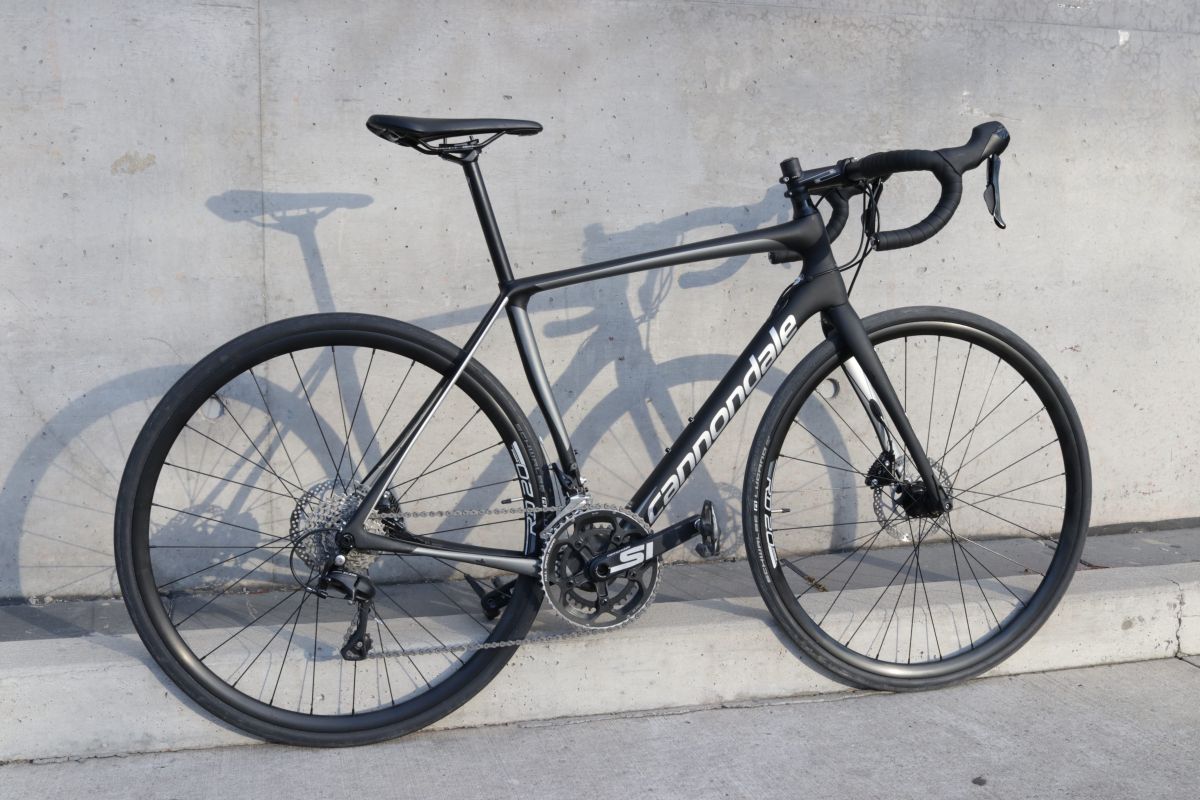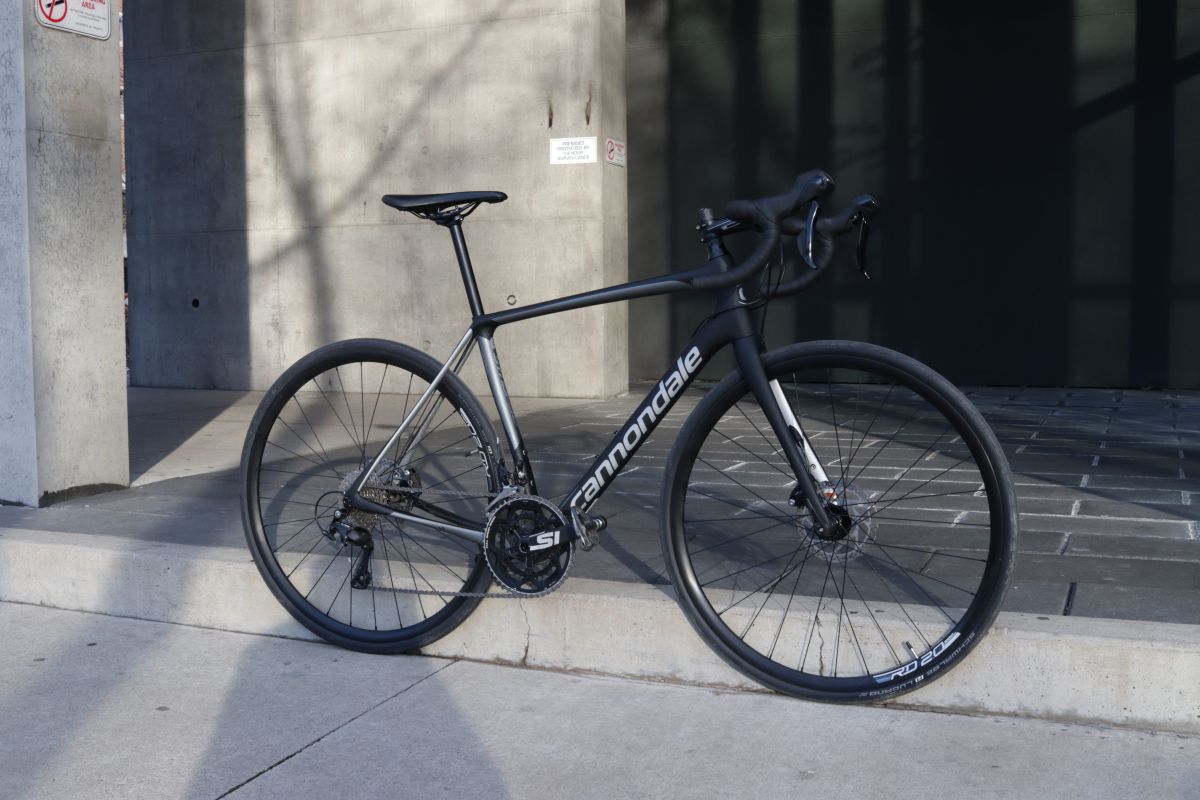Cannondale Synapse Carbon Disc 105 review
Balanced comfort and performance

When Maria Benson got the latest Synapse, she did what I like to do with a new bike: ride it around the office. It lets me get some quick first impressions, check to see if things are in working order and distract my busy colleagues. For Benson, however, the ride around her desk was proof that a new feature of the Synapse worked. The global product manager for road at Cannondale found that the trail on the bike was properly dialed.
Trail is the distance between the front tire’s contact patch and the steering axis, an imaginary line that follows the head tube angle to the ground. Designers can affect the trail by changing the angle of the head tube or the front hub’s offset (also known as rake) from the steering axis. As some bike frames decrease in size, so do their trail numbers. A low trail number often means a twitchy bike. “You can’t go slow and keep the wheel straight,” Benson said of such frames. Her size 51 Synapse with a trail of 60 mm meant she had good slow-speed stability. “I could ride around my desk without feeling like I was going to run into a wall or a random box,” she said.
Components Shimano 105 derailleurs and 11-speed, 11-32 tooth cassette, R505 hydro disc shifters and brakes, Cannondale Si cranks with FSA 34/50-tooth rings
Wheels RD 2.0 Disc
Sizes (cm) 44, 48, 51, 54, 56, 58, 61
Price $3,300
While the size of bike I ride, size 54 mostly, doesn’t usually suffer from extreme geometry numbers, the Synapse I tested did benefit from Cannondale’s attention to its angles. Some endurance bikes can feel, well, a bit bus-like, especially when I’m climbing out of the saddle. The Synapse doesn’t feel like a race bike – it definitely wasn’t like the SuperSix or CAAD – but it does feel sporty on the road. The designers have achieved a nice balance with the frame’s stack and reach.
To mellow the road vibrations that can weary a rider, Cannondale employs its Save features. The more “squashed” areas on the front fork allow for a bit of flex. Compared with the previous Synapse, the Save sections on the seatstays have been moved farther down the tubes, which means they flex better. The seat tube and seatpost have been engineered to give you 8 mm of deflection. The new bike also has increased tire clearance. Benson said it can legally accommodate 32-mm tires. Even if you don’t “break the law” and run even wider treads, the legal limit offers you a good contact patch and some nice squish.
The Synapse I rode was outfitted with Shimano’s 105 groupset. I’ve long been a fan of its excellent performance and durability. The frame has been designed for disc brakes. It features a larger left fork blade and left chainstay to address the braking forces its receives at the calipers. The Shimano RS505 hydro-disc system has great stopping power. It’s not as refined, though, as its upper-tier siblings. The levers made the 42-mm-wide bars seem wider and the braking modulation wasn’t as smooth as Dura-Ace or Ultegra.
My testing period for this bike was throughout the fall. There were some great days. If it weren’t for the enthusiasm this bike engendered, the not-so-great days, with their low temperatures and high winds, would have been crummy. The endurance features and the natural zippiness of the bike made even those challenging days fun. If only I could have held onto the Synapse until the spring.

